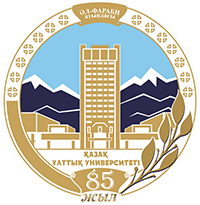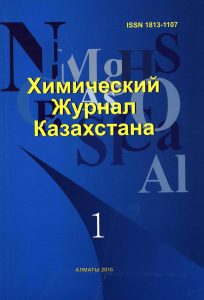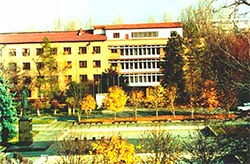The Institute of Chemical Sciences is one of the largest research institutes in Kazakhstan. It consists of 8 laboratories. The Institute employs 2 academicians, 2 corresponding members of the National Academy of Sciences of the Republic of Kazakhstan, 23 doctors and over 25 candidates of science, as well as 9 PhD doctors.
Laboratory of Ion Exchange Resins and Membranes
The laboratory was organized by the Decree of the Bureau of the Presidium of the Academy of Sciences of the Kazakh SSR No. 60 dated July 27, 1960 as part of the Department of Chemistry of High-molecular compounds of the Institute, headed by Academician of the Academy of Sciences of the Kazakh SSR S.R. Rafikov.
From 1968 to 2020, the permanent head of the laboratory was Academician of the National Academy of Sciences of the Republic of Kazakhstan, Honored Scientist, laureate of the State Prize of the Republic of Kazakhstan in the field of science and technology, Doctor of Chemical Sciences, Professor E.E. Ergozhin. In 1974, at the age of 33, he successfully defended his doctoral dissertation on the topic "Synthesis and study of the laws of formation of new ion-exchange and redox polymers" and was included in the collection of the publishing house "Young Guard" of the Eureka series "Daring Youth", Moscow, 1978, telling about young doctors of sciences of the USSR who defended their doctoral dissertations at the age of 35.
Currently, the head of the laboratory is a student of Academician of the NAS RK E.E. Ergozhin, Doctor of Chemical Sciences, Professor T.K. Chalov.
Scientific direction: synthesis, study of physico-chemical characteristics of mesh ion-exchange, complex-forming and redox polymers; creation of original methods for regulating and controlling their permeability and selectivity with respect to complex metal ions and organic compounds; development of methods for obtaining new ion-exchange membranes with increased physico-mechanical and electrochemical characteristics and the creation of electrodialysis desalination plants based on new generations.
The Laboratory of Ion Exchange Resins and Membranes is working with three oil refineries to treat industrial wastewater to provide recycled water supply.
At “Petrokazakhstanoyl Products” LLP, the effectiveness of using a fine cleaning unit at the 3100 plant (chemical water treatment) was investigated. The experience of designing and operating fine filters, both based on cartridge elements and bag elements, makes it possible to assume that the use of bag elements is several times more effective. Filter bags are made of polypropylene (for cold water) and polyester (for cold and hot water) and can be used repeatedly. With repeated regeneration of the bag filter, its performance is reduced by no more than 5%.
Based on the scientific developments of the A.B. Bekturov Research Institute, the effectiveness of the use of a fine cleaning unit consisting of bag filters and 3 stages of purification before reverse osmosis installation was investigated in factory conditions on the territory of “Atyrau Oil Refinery” LLP. Long-term tests were carried out by launching the pilot plant in the operating mode on the territory of ANPZ LLP.
Long-term tests were carried out to reduce the hardness and iron content in steam condensate during reverse osmotic cleaning of the territory of “Pavlodar Petrochemical Plant” LLP. The data obtained show that the pilot reverse osmotic installation designed at the A.B. Bekturov Research Institute has shown its high efficiency.
A technological solution has also been developed to clean the mine waters of the Don Mining and Processing Plant of JSC “TNK Kazchrome” from pollutants. The initial characteristics of the mine water under study have been studied. The analysis was carried out and the optimal technological solution for the effective purification of mine waters from chromium (VI) ions was selected. It has been established that the ion exchange method is the most effective, followed by electrocoagulation, and the reagent method closes this series. Laboratory studies on the sorption of chromium (VI) ions by new anionites synthesized in the laboratory were carried out on a laboratory test bench. A basic technological scheme of water purification from chromium (VI) ions has been developed, which consists of modular blocks of reagent-mechanical, sorption, membrane, ion exchange and bacterial purification.
Currently, research is underway to develop a technology for water purification of the tailing dumps of “KAZZINC”| LLP to reduce environmental pollution by wastewater. Further, long-term tests will be carried out on a manufactured experimental stand with different modes and a comparative assessment of the effectiveness of the proposed methods and options for their joint application will be carried out.
The head of the laboratory is Doctor of Chemical Sciences, Professor Chalov Tulegen Kamenovich.
Phone: +7 (727)-291-30-52
е-mail: chalov.45@mail.ru
Laboratory of Chemistry of Synthetic and Natural Medicinal Substances
Head of the laboratory - laureate of the State Prize of the Republic of Kazakhstan, Doctor of Chemical Sciences, Professor Yu Valentina Konstantinovna
Phone: + 7 727 293 94 78
Email: yu_vk@mail.ru
Laboratory of Chemistry of Fertilizers and Salts
Scientific direction: fundamental and applied research in the field of synthesis of new types of mineral and organomineral fertilizers, humate-containing composite materials, cyanide complex compounds and sorbents. The features of the interaction processes of the main and accompanying components in phosphate-, silicate-, potassium-, and humate-containing systems in a wide range of compositions have been studied. The patterns of influence of various factors on the processes of modification of sodium humate with phosphogypsum, polyacrylamide and their mixture have been established. It was revealed that the interaction of sodium humate and phosphogypsum occurs with the participation of carboxyl and phenolic groups of humate and calcium, aluminum, iron ions of phosphogypsum with the formation of ionic and coordination bonds, and when humate is modified with polyacrylamide, cross-linking of macromolecules occurs due to hydrogen bonds between hydroxyl, carbonyl and carboxyl groups humate and amide groups of polyacrylamide.
Based on systematic research, the theoretical foundations for the processes of extraction of heavy metal ions (Fe, V, Co, Ni, Cu, Cd, Mn, Cr, Pb, etc.) from various media with natural aluminosilicates, ferrocyanides, unmodified and modified humic compounds and purification have been created soil from oil, petroleum products and humic compounds.
The scientific foundations of an innovative technology for processing oil-contaminated (oil-contaminated) soil using an energy-storing additive (EAA) based on humate-containing composite materials have been developed. It has been established that the neutralization of oil-contaminated soil with EAD based on humate promotes the oxidation of oil hydrocarbons and the binding of heavy metals into safe insoluble complexes.
Main technological characteristics: based on the work carried out, energy- and resource-saving technologies have been developed for the production of environmentally friendly humate-containing organomineral fertilizers and composite materials with multifunctional action. Technological schemes for the processes of sorption purification of liquid media and soil from heavy metal ions, oil and petroleum products are proposed. The proposed technological solutions ensure a change in the composition and structure of technogenic waste with the subsequent formation of new compounds without the use of bulky and expensive technological methods and equipment. Instructions have been prepared for the use of humate-containing products in the agro-industrial complex.
Use of research results: large-scale field and production tests of humate-containing products were carried out in Almaty, Kyzylorda, Zhambyl, North Kazakhstan, Akmola, Kustanai and Atyrau regions, in the cities. Astana, Almaty, Aktau and Zhanaozen on grain, legumes, industrial, vegetable, fruit and berry, flower, ornamental, deciduous, coniferous and other crops. It has been established that these drugs cause significant changes in the physiological state of plants, activating biochemical processes, contributing to an increase in the degree of germination and survival of the tested plants, a reduction in the period of their growing season and ripening (by 3-5 days), an increase in the yield of the tested crops (by 20-30%) , improving the quality of finished products, increasing plant resistance to abiotic and biotic conditions (diseases, unfavorable environmental conditions, etc.). Currently, tests are being carried out on humate-containing composite materials for landscaping (industrial sites of Ozenmunaigas JSC) and for the restoration of desertified soils in the Mangystau region. (Senek, Ushtagan, Tushchykudyk, Mangystau and Karakiyan districts) by growing plants adapted to local conditions (zhuzgen, black saxaul, island, etc.). Agrochemical studies have shown that the use of humic preparations leads to an increase in the areas occupied by saxaul and zhuzgen (the total forest area is more than 250 hectares), the elimination of the harmful effects of shifting sands and the restoration of desertified soils and the use of sandy massifs for agricultural use.
Implementation of research results: the drug “Supergumat” was introduced into “Zelenstroy” LLP, “Zhasylalma” LLP and “Magnolia Distard” LLP, and is used for landscaping the city of Almaty. A license agreement was concluded with the Kaiyndy farm (Ryskulovsky district, Zhambyl region) on the use of organomineral fertilizers according to the patent of the Republic of Kazakhstan No. 19701.
The technology for neutralizing oil-contaminated soil using EAD based on humate-containing materials has been successfully tested and implemented at Ozenmunaigas JSC; more than 600.0 thousand tons of oil-contaminated soil have been processed. As a result of neutralization, the oil-contaminated soil was transferred from the category of hazard class 3 waste to a commercial product of hazard class 5. A conclusion was received on the safety of the neutralized soil and the resulting products (there are research protocols of the RGKP “Scientific and Practical Center for Sanitary and Epidemiological Expertise and Monitoring” of the KGSEN of the Ministry of Health of the Republic of Kazakhstan, the State Enterprise “Ecological Research Laboratory” of the Department of Natural Resources and Environmental Regulation of the Mangystau Region). Regulatory and technical documentation has been developed and approved: technological regulations, detailed design, volume of EIA, PEC. An organization standard (SS 72-1907-17-AO-02-2019) and a certificate of conformity (No. KZ.7500317.01.01.22038) for neutralized soil were received. Technologies have been developed for using neutralized soil as a secondary raw material to produce environmentally friendly products (road and building materials) in open landfill conditions.
Samples of paving slabs of various shapes were obtained in an amount of more than 60,000 pieces, which were laid near a secondary school in the Rakhat microdistrict, near a mosque (Zhanaozen) and at the GU-57 NGDU-1 training ground. With the scientific support of KazDorNII JSC, a pilot section of the road with a length of more than 800 m and a width of 7.0 m was built at the test sites GU-57 NGDU-1 and GU-27 NGDU-4. It has been established that neutralized soil can be used as part of “road pavement” and as a mineral powder in the asphalt concrete mixture, depending on the climatic conditions of the region during the construction of highways for various purposes.
Head of the laboratory - Corresponding Member of the National Academy of Sciences of the Republic of Kazakhstan, Doctor of Technical Sciences, Professor Jussipbekov Umirzak Zhumasilovich
Phone: +7 (727) 291 73 18
е-mail: umirzakdzusipbekov@gmail.ru
Laboratory of Polymer Synthesis and Physicochemistry
Scientific direction: the research of the Laboratory of Synthesis and Physicochemistry of Polymers is aimed at developing new macromolecular structures with specified properties. Scientific research is carried out by the research group led by the Head of the laboratory, Doctor of Chemical Sciences, Prof. Jumadilov Talkybek Kozhataevich.
The research group of Prof. Jumadilov is engaged in the development of innovative methods for the extraction and separation of target metal ions based on the remote interaction of rare-crosslinked polymers and hydrogels. Depending on the nature of the target metal ions, new methods are being developed for both parallel and sequential extraction from product solutions of hydrometallurgy.
For almost 50 years of scientific activity, Prof. Jumadilov has made a huge contribution to the development and formation of such scientific directions as physical chemistry of aqueous and non-aqueous solutions of ionic and nonionic linear and crosslinked polymers based on vinyl monomers; electrochemistry, study of conformation and complexation of hydrophilic polymers and copolymers based on vinylpyridines, vinylimidazoles, alkylacrylates and acrylic, methacrylic acids; molecular complexes of polymers; patterns of formation of ion-conducting complexes and composites in non-aqueous media; intergel- and interpolymer systems; activation phenomena during remote interaction of acidic and basic polyelectrolytes; high sorption activity of activated ionogenic polymers; selective interpolymer systems; methods and technologies for concentrating and extracting transition and rare earth metal ions from aqueous systems. Recent developments have been devoted to the study of electrochemical, volume-gravimetric and sorption properties of hydrogels and ion-exchange resins, as well as interpolymer systems based on them.
Currently, the laboratory staff is conducting research work on the Project AP14870002 "Development of modern methods for separation and extraction of rare-earth metals from concentrates and technological solutions of sulfuric acid leaching" (scientific supervisor - Head of the laboratory, Doctor of Chemical Sciences, Prof. Jumadilov Talkybek Kozhataevich) within the framework of a Competition for grant funding for scientific and (or) scientific and technical projects for 2022-2024 (MSHE of RK). In 2023, methods for the separation of industrial concentrates of rare earth metals were developed. A laboratory ion exchange facility has been created and tested.
In addition, the laboratory staff carry out the research under the Program BR18574042 "Innovative synthesis methods and technologies for obtaining functional inorganic and organic substances and materials from natural and man-made raw materials" for 2023-2024 years (Scientific supervisor – head of the laboratory, Doctor of Chemical Sciences, Prof. Jumadilov Talkybek Kozhataevich; responsible executor of the program, Doctor of Chemical Sciences, chief researcher Kharlamova T.V.) within the framework of the Competition for program-targeted funding for scientific, scientific, and technical programs for 2022-2023 (MSHE of RK).
In 2023, for his contribution to the development of science and his tireless pursuit of new discoveries, Prof. Jumadilov Talkybek was awarded the victory in the competition "Best Researcher-2023" organized by the Ministry of Science and Higher Education of the Republic of Kazakhstan. This award was a recognition of the great contribution and efforts for the outstanding achievements of Talkybek Kozhataevich in the field of science.
Head of the laboratory – Doctor of Chemical Sciences, Professor Jumadilov Talkybek Kozhataevich
Phone: +7 (727) 291 19 66
е-mail: jumadilov@mail.ru
Laboratory of Chemistry of Physiologically Active Compounds
Scientific direction: synthesis and study of reactivity, stereochemistry of transformations and properties of new organic compounds containing unsaturated carbon-carbon and carbon-heteroatomic bonds, which have potential biological and physiological activity for subsequent use in agriculture and industry of Kazakhstan. Development of scientific bases for the creation of new resource-saving and environmentally friendly “green” technologies for producing plant growth regulators, pesticides, flotation agents and feed additives.
The Laboratory of Chemistry of Physiologically Active Compounds JSC "A.B. Bekturov Institute of Chemical Sciences" cooperates with the Department of Chemistry and Technology of Organic Substances, Natural Compounds and Polymers of the Faculty of Chemistry and Chemical Technology of Al-Farabi Kazakh National University in the field of training young personnel bachelors and masters, in the transfer of new technologies and best practices in teaching and research activities. Bachelors, undergraduates and doctoral students of the Department of Chemistry and Technology of Organic Substances, Natural Compounds and Polymers perform research work in the laboratory on the topics of graduation theses, master's and PhD doctoral dissertations. Also, within the framework of the concluded agreement between the department and JSC "A.B. Bekturov Institute of Chemical Sciences", undergraduates and doctoral students undergo scientific training.
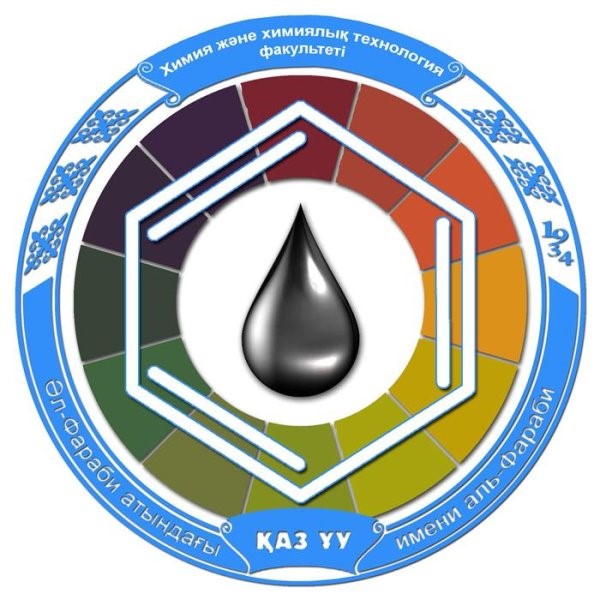
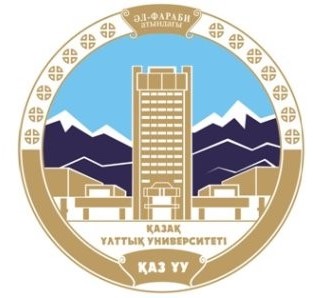
The head of the laboratory is Candidate of Chemical Sciences Mukanova Meruert Sisenbekovna.
Phone: +7 (727)-291-75-32
е-mail: chem_mukan@mail.ru
Laboratory of Petroleum Chemistry and Petrochemical Synthesis
Scientific direction: the development of catalytic systems for the processing of hydrocarbons into popular petrochemical products, the synthesis of high-octane and high-cetane fuel additives, partial oxidation and oxidative ammonolysis.
The head of the laboratory is Kairat Adyrbekovich Kadirbekov, Doctor of Chemical Sciences, Associate Professor.
Phone: +7 (727) 291-24-80
е-mail: kkairati@mail.ru
Laboratory of Inorganic Synthesis and Materials
Scientific direction: the synthesis of active substances and on the basis of preparative forms, the study of their physico-chemical characteristics and agrochemical properties of the compositions of multifunctional action based on phyto compounds and inorganic salts, which have fertilizing and fungicidal properties.
Head of the laboratory - Doctor of Technical Sciences, Professor Sultan Usmanov.
е-mail: usmanov_su@mail.ruLaboratory of physical and chemical methods of analysis and ecology
Scientific direction: Physical and chemical studies of biological and agrochemical effective preparations, petroleum products, organic pollutants and oily wastes, the study of chemical transformations of toxicants (nitrogenous bases, aromatic components of oil, pesticides, persistent organic pollutants); conducting production monitoring of environmental components (analysis of soil, air, groundwater, flora and fauna) at industrial facilities of the Republic of Kazakhstan; analysis of medicinal substances and their derivatives, determination of the structure of natural and synthetic organic compounds.
The head of the laboratory is Candidate of Technical Sciences Tusupkaliev Ersin Adietovich.
Phone: +7 (727)-291-57-70
е-mail: labfizhim@mail.ru
Department of Patent Licensing and Publishing
Objectives of the patent division: protection of intellectual property of the Institute, scientific and methodological guidance in conducting patent research, advertising promising developments at exhibitions of various ranks and the release of the “Chemical Journal of Kazakhstan”.
The head of the department is Candidate of Historical Sciences Kapustina Lyudmila Ilyinichna.
Phone: 8 (727) -291-59-31
Email kapli7@mail.ru
